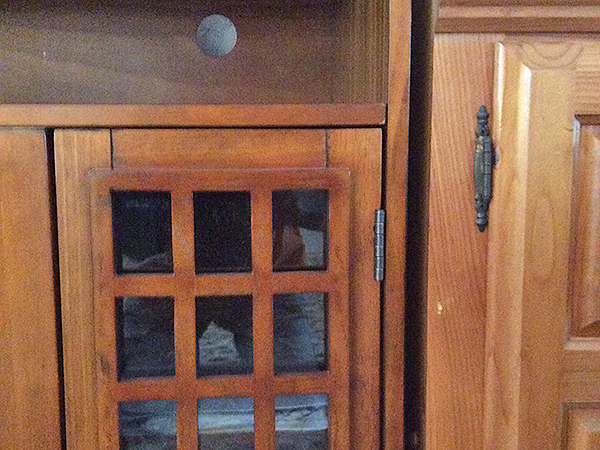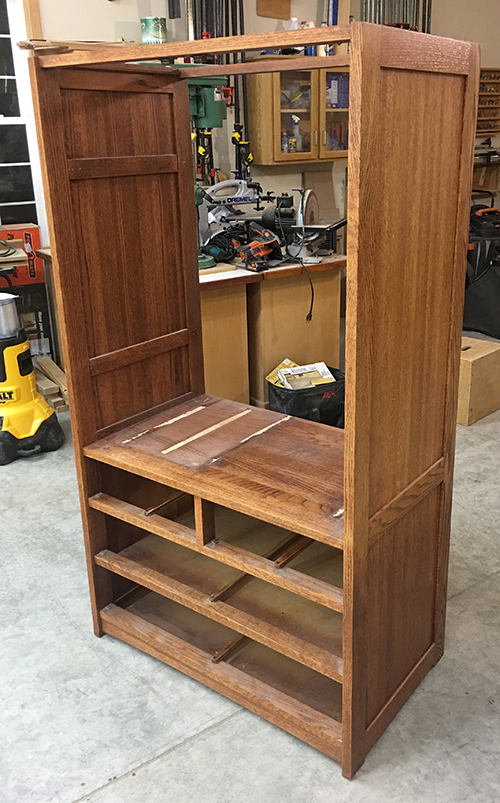
I’m trying to better match the finish on a pine cabinet to a new TV stand that has a darker color. The finish on the TV stand is called Narita Glazed Pine. I watched a how-to video on toning on the General Finishes website but need help with the best water-based stain color and topcoat to use. Or is there a different solution I should try instead? – Robert Bossardet
Tim Inman: Like medicine, which is both an art and a science, wood finishing is, too. There isn’t a “magic” formula or product for what you are wanting. The science is mostly in the can, the art is all in your eye and hand. So, how to do what you want here? Well, practice, practice, practice first, then apply what you’ve learned to your project. Sadly, over my entire career, I have answered many, many questions that resulted from first applying to the project, then asking how to reverse and try again since it didn’t come out like they wanted. I repeat: practice, practice, practice — before you apply it to the project!
Chris Marshall: Last year, I converted a formerly tall entertainment center (center photo) into a shorter one so our flat-screen TV could sit on top instead of inside. I needed to strip and repair the top panel, then match the bare wood to the rest of the old finish on the cabinet. My solution? I bought three stain colors, blended them together a little at a time and applied my experimental concoction to a scrap of leftover wood from the original cabinet. There was no magic to it, just trial and error. I tried maybe a dozen attempts at a shade, and I eventually reached a color that worked out quite nicely (bottom photo). The key, for me at least, as Tim suggests, was practicing on something safe before I committed and couldn’t easily turn back.

Now, you’re asking about toning over an existing stain color, which is a different finishing process altogether than what I needed for my project. But, our goals aren’t entirely different, nor is the process of reaching a workable solution: matching one finish to another. If the same finish is on the back face of your pine cabinet’s back panel — and no one sees that anyway — you might have your testing grounds right there. Or, maybe you could use the bottom face of one of its shelves for experimenting. Either way, buy a few stain options, try toning and see what happens. You might find the “happy medium” you’re looking for, or you might not. There are no guarantees. But even if you don’t match the two projects quite successfully, think of what you’re bound to learn about toning in the process. It’s worth the practice. Good luck!






